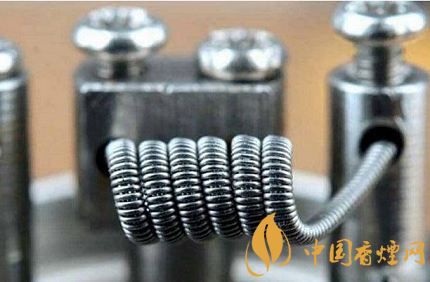The heating coil is a crucial component within the E-cigarette, responsible for absorbing e-liquid and efficiently atomizing it. Its primary function involves supplying power from the battery to the heating coil assembly, causing the dissolved substances to volatilize and produce vapor. This enables smokers to simulate the act of smoking.
Currently, the market offers various heating wires, broadly categorized into three types: Kanthal, NI80, titanium, pure nickel, and stainless steel wires. Each variety has advantages and disadvantages, and the price varies due to technology, formula, material, publicity, and trends.
Different E-cigarette heating wires serve different purposes. For instance, Kanthal and NI80 are power heating wires, while titanium and pure nickel wires are temperature control heating wires. On the other hand, stainless steel wire functions as both a power and temperature control heating wire. The quality of the heating wire directly impacts the user’s taste, experience, and safety.
Firstly, it’s essential to determine whether your atomizer is of the oil storage or oil drop type. In the case of an oil storage atomizer, the heating wire’s resistance generally remains above 1.2Ω, ideally between 1.5-1.8Ω. For such cases, a recommended coil diameter is around 2.0-2.4mm, using a 0.32mm or 0.3mm heating wire, tightly wrapped around 5-7 times. Some variations in the results are expected due to individual techniques. Conversely, a meager resistance is required for oil drop atomizers, typically used for direct dripping, often below 0.5Ω. In this scenario, the coil diameter should be less than 2.0mm, avoiding excessive thinness that might hinder cotton insertion. A 0.5mm heating wire is not advised, as thicker wires can be challenging. Instead, wrap the wire tightly around 4-5 times, adjusting as per personal preference. To achieve higher or more desirable results, consider modifying the coil diameter or the diameter of the heating wire.
One side of a dual heating coil commonly heats up quickly, while the other side heats up slowly. In such cases, check the tightness of the electrode screws, ensure the number of loop turns on both sides is equal, and verify that the ring is tightly wrapped. Uneven coil heating is another issue that may arise, where certain sections heat up while others do not. To address this, use tweezers or similar tools to horizontally scrap the coil while maintaining tight screws and a compact coil structure, allowing the heating wire to vibrate and achieve more uniform heating.
This covers the relevant information about E-Cigarette heating wires. I hope you found it enlightening for more information on electronic cigarettes.
Read Also: 4 Factors to Consider When Choosing an E-Cigarette
Do not forget to follow us on our Facebook group and page to keep you always aware of the latest advances, News, Updates, review, and giveaway on smartphones, tablets, gadgets, and more from the technology world of the future.









